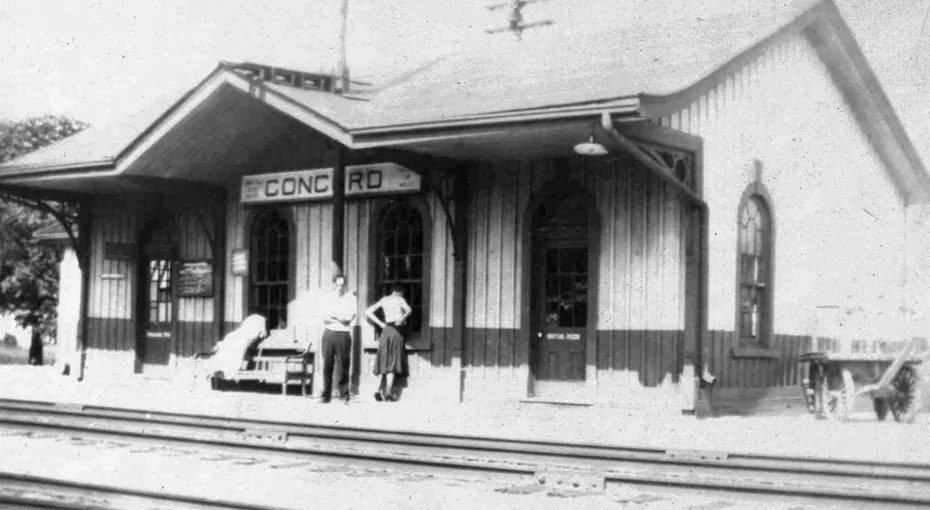From the archives: Concord Railway Station
Learn more about the city’s history from the Vaughan Archives
From the traditional territories of the First Peoples of Turtle Island, to a farmland community, to a bustling city centre and everything in between – Vaughan's transformation is a story worth telling. The City of Vaughan’s popular monthly series continues, with historical content from the Vaughan Archives being shared.
Scroll through memory lane, learn about the city's past and explore the places, people and events that were pivotal to the development of the Vaughan we know today. This month, the City is highlighting the Concord Railway Station.
The Ontario Simcoe and Huron Railway Co., later known as the Northern Railway Co., built the earliest railway through Vaughan and the first in Ontario. It was built in 1853 and ran from Toronto north to Lake Simcoe. In 1856, the line was extended to Collingwood.
For many years, the railway station in Concord was called the Thornhill Railway Station, until it was later renamed the Concord Railway Station.
In 1888, Northern Railway Co. merged with the Grand Trunk Railway Co. and, in 1923, it eventually became part of the Canadian National Railway. With the opening of Highway 400 in 1951, Concord slowly started becoming Vaughan’s industrial district, with many trains coming into town. After construction of the Canadian National Railway bypass, the City of Toronto started planning for a four-kilometre freight yard and an industrial park near Jane Street. In 1956, the by-pass connection was completed, extending from Pickering in the east to Weston Road in Vaughan. The freight yard, located at the intersection of Keele Street and Highway 7, helped cargo trains avoid a heavily congested route through Toronto.
Eventually, the railway, including the original Concord Railway Station, became part of a GO Transit route to Toronto. This line now runs from Union Station to Concord and beyond, serving commuters living in the Greater Toronto Area.
ABOUT VAUGHAN ARCHIVES
Established in 1988, the City of Vaughan Archives is home to more than 600 collections, consisting of both City records and cultural records about Vaughan from 1860 to the present day. Records include, but are not limited to:
- City business records with long-term legal and administrative value, such as Council meeting minutes, by-laws, assessment rolls, financial records, reports and official correspondence
- church, community and school records
- census records
- historical photographs
- land records
- historical maps, plans and aerial photographs
- newspapers
- personal papers of past residents and founding families, such as diaries, family histories, journals and letters
- records of local organizations, both past and present
VIEW VAUGHAN'S ARCHIVES ONLINE!
The City's Archival Collection is on digital display for all to explore! The below galleries are available in the City's online gallery on Flickr:
- Early Communities of Vaughan
- From Township to City: The Evolution of Vaughan
- Featured Artists of Vaughan
- Historical Families of Vaughan
- Historical Figures: Lord Beaverbrook
- Historical Photography
- Recollections of Rural Vaughan
- The Mary Wood Collection
- The Way We Were: Representations of Vaughan's Past
- Vaughan Working Environments
- Vaughan Through the Ages: Medicine, Music and Sports and Recreation
- Early Churches of Vaughan
- Historical Schools of Vaughan
A personal Flickr account is not required to access the City's online gallery, which contains only a small selection of the full archives collection. If you are looking for a particular image, original file, primary source record or more, please visit the Archival Database, or contact the Vaughan Archives by calling 905-832-2281 or emailing archives@vaughan.ca.
By managing and preserving both City and community records, the Enterprise Information Management Services team ensures that Vaughan's rich and varied history will continue to be available for future generations. Learn more at vaughan.ca/archives.
For the latest updates, subscribe to Vaughan News and follow the official corporate channel on Twitter, Facebook, Instagram and LinkedIn.





